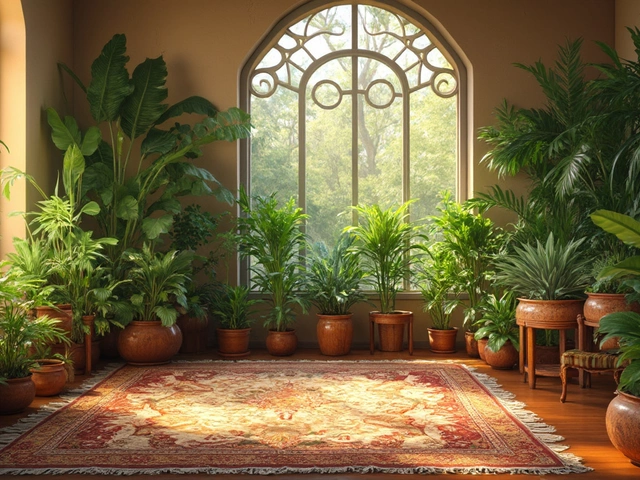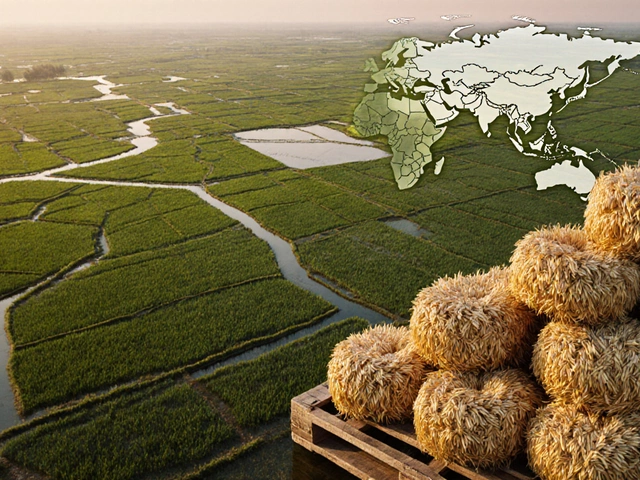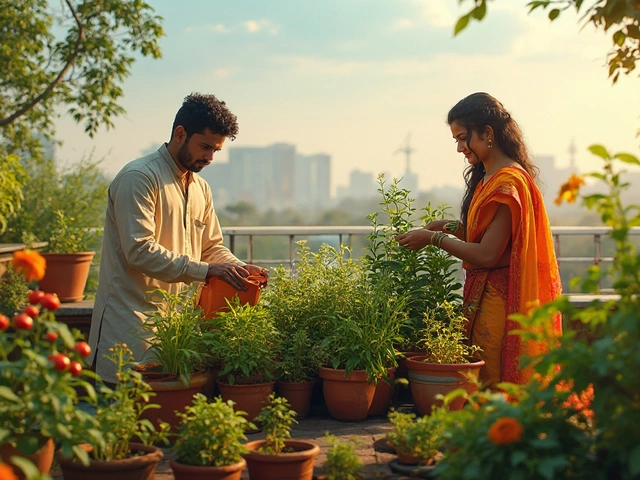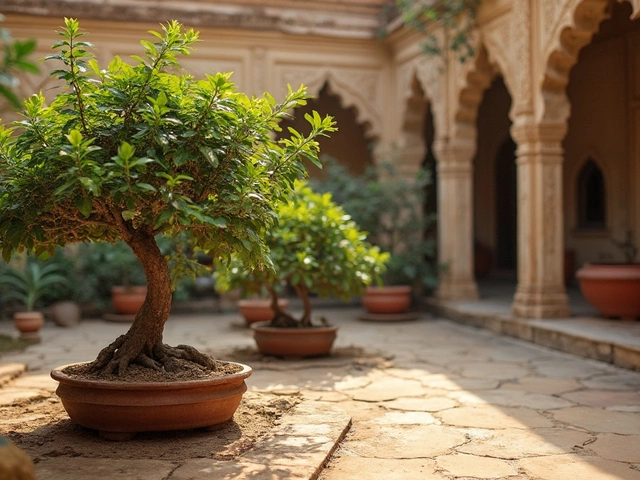If you're into gardening, you've probably heard about Epsom salt. It's not just a bathroom staple; it's a little magic trick for your plants too! Packed with magnesium and sulfur, Epsom salt can play a key role in enriching garden soil. Magnesium, in particular, is crucial for photosynthesis, which means your plants can grow stronger and greener.
Think of Epsom salt as a multivitamin for your plants. Many gardeners swear by it to improve germination, fertilization, and nutrient absorption. Whether you're growing tomatoes, roses, or peppers, Epsom salt might be the secret sauce your garden needs for a healthier, more productive season.
But how does this all work? Well, it's pretty straightforward. You see, magnesium acts like a dietary supplement for your plants, ensuring they easily absorb nutrients from the soil. And the best part? It's affordable and easy to apply. Just a tablespoon mixed with water can do wonders!
- Understanding Epsom Salt
- Benefits for Garden Plants
- How to Apply Epsom Salt
- Frequently Asked Questions
- Common Misconceptions
Understanding Epsom Salt
Epsom salt might sound like something you'd find at a spa, but it's actually a gardener's friend too. Chemically known as magnesium sulfate, it's made up of three elements: magnesium, sulfur, and oxygen. This combo is like a power snack for your plants, giving them what they need to thrive.
Why Magnesium Matters
Magnesium is a big deal in the plant world. It helps with photosynthesis, which is the process plants use to turn sunlight into food. So, when your plants have enough magnesium, they can grow lush and green. A lack of magnesium might lead to yellow leaves or stunted growth, which nobody wants in their garden.
The Role of Sulfur
Don’t overlook sulfur. It plays a key role in building a plant's proteins and vitamins. And while plants usually get sulfur from the soil naturally, sometimes it just isn’t enough. This is where Epsom salt steps in, providing an easy boost to help plants stay strong.
Because Epsom salt is highly soluble, plants can easily absorb these nutrients. This makes it an effective and quick fix for many common garden problems.
Common Forms and Uses in Gardening
Epsom salt usually comes in a granular form that you can sprinkle on the soil or dissolve in water. It's simple: sprinkle it, water it in, and watch your garden transform. Whether applied directly to the earth or as a foliar spray, Epsom salt can cater to your gardening needs.
| Element | Function |
|---|---|
| Magnesium | Enhances photosynthesis and growth |
| Sulfur | Aids in protein synthesis and vitamin formation |
In a nutshell, Epsom salt is an accessible and affordable way to give your plants a nutrient leg-up. And because it’s readily available, you can find it in most gardening sections or pharmacies. Next time you're on a gardening supply run, consider grabbing a bag to boost your green space!
Benefits for Garden Plants
Adding Epsom salt to your gardening routine can create a noticeable difference in the health and vitality of your plants. But what exactly can it do? Let's break it down.
Enhanced Nutrient Uptake
Magnesium, a key component of Epsom salt, plays a crucial role in aiding nutrient absorption. Without enough magnesium, plants can't absorb essential nutrients like nitrogen and phosphorus. So if your plants are lacking the green hue, it might be time to sprinkle a little Epsom salt around.
Boosting Photosynthesis
Plants rely on photosynthesis to create the energy they need to grow. The magnesium in Epsom salt helps produce chlorophyll, the green pigment in plants that's essential for capturing sunlight. More chlorophyll means better energy production and healthier plants.
Better Flowering and Fruiting
If you're into growing flowers, fruits, or veggies, using Epsom salt can give your blooms and produce a nice lift. Magnesium aids in flowering so you'll notice more vibrant colors and potentially larger fruits.
Natural Pest Deterrent
Shhh, here's a little secret: Epsom salt can help keep certain pests at bay. While it doesn’t kill pests outright, adding Epsom salt to the soil can deter slugs and other soft-bodied critters that don't appreciate the rough texture.
Combating Common Deficiencies
Have you noticed yellowing leaves or slow growth? Your soil might lack sulfur or magnesium. A simple Epsom salt solution could be the fix you need. Just mix two tablespoons with a gallon of water and spray directly into your soil.
| Plant | Recommended Dosage |
|---|---|
| Tomatoes | 1 tablespoon per plant every 2-4 weeks |
| Roses | 1/2 cup per plant during bloom |
| Peppers | 1 tablespoon per plant every 2 weeks |

How to Apply Epsom Salt
So, you're ready to try out Epsom salt in your garden? Awesome choice! Let's walk through the best ways to get it into action. Whether you're eager to boost blooms or help vegetable plants thrive, there's a straightforward method for every gardening situation.
For Potted Plants
Potted plants often miss out on essential nutrients due to limited soil amounts. Here's how to help:
- Mix one tablespoon of Epsom salt in a gallon of water.
- Water your potted plants with this solution about once a month.
Remember, moderation is key—too much can overwhelm delicate plants.
For Vegetables
Vegetables, like tomatoes and peppers, love magnesium. To give them a nutrient boost:
- Before planting, mix a cup of Epsom salt into the soil.
- Once plants start growing, sprinkle a tablespoon around each plant every few weeks.
Doing this can help with yield and keep your veggies vibrant.
For Lawns
A surprising but effective use of Epsom salt is on your lawn. It enhances nutrient uptake, resulting in greener, healthier grass:
- Mix two tablespoons of Epsom salt per gallon of water.
- Spray evenly every six weeks for the lushest results.
And voilà! Your lawn could be the envy of the neighborhood.
A Quick Feed with Foliar Spray
For a quick nutrient boost, try a foliar spray. This direct method helps plants absorb nutrients fast. Here's what to do:
- Mix a tablespoon of Epsom salt in a gallon of water.
- Fill your garden sprayer with the solution.
- Mist leaves early in the morning or late afternoon to avoid strong sunlight.
It's a great way to give your plants an easy snack!
Using Epsom salt is all about observing your plants. If they look healthier, you know you're on the right track. Remember, start slow, observe, and adjust as necessary. Happy gardening!
Frequently Asked Questions
Gardening with Epsom salt can spark a lot of curiosity, so let's tackle some of the most common questions.
Is Epsom Salt Safe for All Plants?
Most plants can benefit from a little Epsom salt, but it's important not to overdo it. While it helps with magnesium and sulfur supplementation, always follow guidelines for each specific plant. A tablespoon in a gallon of water is generally a safe dilution for most garden situations.
Can Epsom Salt Help with Blossom End Rot?
Yes! Blossom end rot in tomatoes can be frustrating, and low magnesium levels could be a culprit. Epsom salt is known for helping improve magnesium levels, thus offering a potential fix for this problem. Keep in mind, however, that it's just one piece of the puzzle. Ensure your plants are properly watered and fed for best results.
How Often Should I Use Epsom Salt?
Using Epsom salt once a month is usually enough to see benefits. Just dissolve one tablespoon of Epsom salt in a gallon of water and apply it directly to the soil or as a foliar spray. Remember to adjust the frequency based on your plant’s needs and the pH of your soil.
Does Epsom Salt Deter Pests?
While not a primary pest control method, Epsom salt can act as a deterrent to some pests. It doesn’t kill them but can make your plants less appealing to certain bugs like slugs. Some gardeners sprinkle it around their garden beds to help keep pests at bay.
Can I Use Epsom Salt for Indoor Plants?
Definitely! Indoor plants like ferns or palms can also benefit from Epsom salt. Just make sure you don’t overdo it since potted plants have different drainage conditions than those in a garden. A small pinch every month or so should do the trick.
"Incorporating Epsom salt is like an affordable insurance policy for gardeners, offering a simple solution to common growing pains," says Tom Peters, a well-known horticulturist.
So, what do you think? Knowing how and when to use Epsom salt can make gardening a bit easier and more rewarding. Give it a try and see the difference in your own patch of green!

Common Misconceptions
When it comes to Epsom salt for plants, there's a fair share of myths floating around. Some gardeners swear by it, while others aren't convinced. Let's clear up some of those common misconceptions so you can use it effectively in your garden!
Myth 1: Epsom Salt is Miracle Cure for All Plants
While Epsom salt is super useful for certain types of plants, it's not a one-size-fits-all solution. It's particularly beneficial for plants that are magnesium deficient, like tomatoes and peppers. But dumping it on everything isn't necessarily going to turn you into a plant whisperer. So, it's worth checking if your plants actually need it before getting carried away.
Myth 2: More is Better
We often believe that if a little is good, then more must be better. Not true with Epsom salt! Overdoing it can lead to soil issues and even harm your plants. Stick to recommended doses, like a tablespoon per gallon of water during the growing season, to keep things balanced.
| Plant Type | Amount Needed |
|---|---|
| Tomatoes | 1 tablespoon per foot of plant height |
| Roses | 1/2 cup around the base |
Myth 3: Epsom Salt Repels Pests
While some folks say Epsom salt can keep pests away, there's little evidence to support this. It's best to use it for its actual benefits: improving nutrient absorption and helping with magnesium deficiencies. For pest control, you might want to stick with proven methods instead.
Myth 4: It's Just an Old Wives' Tale
Some dismiss the use of Epsom salt as just garden folklore, but studies have shown its usefulness, especially in magnesium-deficient soil. So don't toss it out with the bathwater just yet! For some plants, a little pinch of this stuff can really make a difference.
Understanding these misconceptions helps you use Epsom salt wisely in your gardening efforts. It's not snake oil, but like any garden remedy, it's all about knowing when and how to use it!





